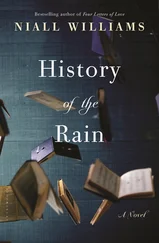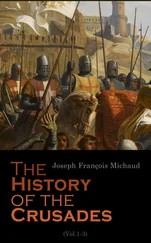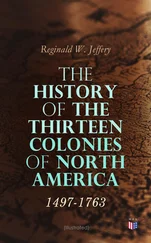The trials of the Negroes had continued, but were somewhat overshadowed by that of the reputed Catholic priest. On the 18th of July seven Negroes were hanged, including a Negro doctor named Harry. On the 23d of July a number of white persons were fined for keeping disorderly houses—entertaining Negroes; while nine Negroes were, the same day, released from jail on account of a lack of evidence! On the 15th of August a Spanish Negro was hanged. On the 31st of August, Corry (the dancing-master), Ryan, Kelly, and Coffin—all white persons—were dismissed because no one prosecuted; while the reader must have observed that the evidence against them was quite as strong as that offered against any of the persons executed, by the lying trio Burton, Kane, and Sarah. But Mr. Smith the historian gives the correct reason why these trials came to such a sudden end.
"The whole summer was spent in the prosecutions; every new trial led to further accusations: a coincidence of slight circumstances, was magnified by the general terror into violent presumptions; tales collected without doors, mingling with the proofs given at the bar, poisoned the minds of the jurors; and the sanguinary spirit of the day suffered no check till Mary, the capital informer, bewildered by frequent examinations and suggestions, lost her first impressions, and began to touch characters, which malice itself did not dare to suspect." 257
The 24th of September was solemnly set apart for public thanksgiving for the escape of the citizens from destruction!
As we have already said, this "Negro plot" has but one parallel in the history of civilization. It had its origin in a diseased public conscience, inflamed by religious bigotry, accelerated by hired liars, and consummated in the blind and bloody action of a court and jury who imagined themselves sitting over a powder-magazine. That a robbery took place, there was abundant evidence in the finding of some of the articles, and the admissions of Hughson and others; but there was not a syllable of competent evidence to show that there was an organized plot. And the time came, after the city had gotten back to its accustomed quietness, that the most sincere believers in the "Negro plot" were converted to the opinion that the zeal of the magistrates had not been "according to knowledge." For they could not have failed to remember that the Negroes were considered heathen, and, therefore, not sworn by the court; that they were not allowed counsel; that the evidence was indirect, contradictory, and malicious, while the trials were hasty and unfair. From the 11th of May to the 29th of August, one hundred and fifty-four Negroes were cast into prison; fourteen of whom were burnt, eighteen hanged, seventy-one transported, and the remainder pardoned. During the same space of time twenty-four whites were committed to prison; four of whom were executed, and the remainder discharged. The number arrested was one hundred and seventy-eight, thirty-six executed, and seventy-one transported! What a terrible tragedy committed in the name of law and Christian government! Mary Burton, the Judas Iscariot of the period, received her hundred pounds as the price of the blood she had caused to be shed; and the curtain fell upon one of the most tragic events in all the history of New York or of the civilized world. 258
The legislature turned its attention to additional legislation upon the slavery question. Severe laws were passed against the Negroes. Their personal rights were curtailed until their condition was but little removed from that of the brute creation. We have gone over the voluminous records of the Province of New York, and have not found a single act calculated to ameliorate the condition of the slave. 259He was hated, mistrusted, and feared. Nothing was done, of a friendly character, for the slave in the Province of New York, until threatening dangers from without taught the colonists the importance of husbanding all their resources. The war between the British colonies in North America and the mother country gave the Negro an opportunity to level, by desperate valor, a mountain of prejudice, and wipe out with his blood the dark stain of 1741. History says he did it.
215Brodhead's History of New York, vol. i. p. 184.
216O'Callaghan's History of New Netherlands, pp. 384, 385.
217Brodhead, vol. i. p. 194.
218Ibid, vol. i. pp. 196, 197.
219Dunlap's History of New York, vol. i. p, 58.
220O'Callaghan, p. 385.
221Van Tienhoven.
222Hildreth, vol. i. p. 441; also Hol. Doc., III. p. 351.
223Annals of Albany, vol. ii. pp. 55–60.
224O'Callaghan, p. 353. N.Y. Col. Docs., vol. ii, pp. 368, 369.
225Brodhead, vol. i. p. 697.
226Brodhead, vol. i. p. 746.
227Ibid., vol. i. p. 748.
228Valentine's Manual for 1861, pp. 640–664.
229New York Hist. Coll., vol. i. pp. 322, 323.
230Journals of Legislative Council, vol. i. p xii.
231Bradford's Laws, p. 125.
232Journals, etc., N.Y., vol. i. p. xiii.
233Dunlap's Hist, of N.Y., vol. i. p. 260,
234Booth's Hist, of N.Y., vol. i. p, 270–272.
235On the 22nd of March, 1680, the following proclamation was issued: "Whereas, several inhabitants within this city have and doe dayly harbour, entertain and countenance Indian and neger slaves in their houses, and to them sell and deliver wine, rum, and other strong liquors, for which they receive money or goods which by the said Indian and negro slaves is pilfered, purloyned, and stolen from their several masters, by which the publick peace is broken, and the damage of the master is produced, etc., therefore they are prohibited, etc.; and if neger or Indian slave make application for these forbidden articles, immediate information is to be given to his master or to the mayor or oldest alderman."—Dunlap, vol. ii. Appendix, p. cxxviii.
236Bradford Laws, p. 81.
237The ordinance referred to was re-enacted on the 22d of April, 1731, and reads as follows: "No Negro, Mulatto, or Indian slave, above the age of fourteen, shall presume to appear in any of the streets, or in any other place of this city on the south side of Fresh Water, in the night time, above an hour after sunset, without a lanthorn and candle in it (unless in company with his owner or some white belonging to the family). Penalty, the watch-house that night; next day, prison, until the owner pays 4 s , and before discharge, the slave to be whipped not exceeding forty lashes."—Dunlap, vol. ii. Appendix, p. clxiii.
238Booth, vol. i. p. 271.
239Hurd's Bondage and Freedom, vol. i. p. 281.
240Dunlap, vol. i. p. 323.
241Judge Daniel Horsemanden.
242Hume, vol. vi. pp. 171–212.
243Ibid., vol. vi. p. 171.
244Horsemanden's Negro Plot, p. 29.
245As far back as 1684 the following was passed against the entertainment of slaves: "No person to countenance or entertain any negro or Indian slave, or sell or deliver to them any strong liquor, without liberty from his master, or receive from them any money or goods; but, upon any offer made by a slave, to reveal the same to the owner, or to the mayor, under penalty of £5."—Dunlap, vol. ii. Appendix, p. cxxxiii.
246Horsemanden's Negro Plot, p. 33.
247Bradford's Laws, pp. 141–144.
248Horsemanden's Negro Plot, p. 60.
249The city of Now York was divided into parts at that time, and comprised two militia districts.
250Dunlap, vol. i. p. 344.
251Horsemanden's Negro Plot, p. 284.
252Horsemanden's Negro Plot, p. 286.
253Colonial Hist. of N.Y., vol. vi. p. 199.
254Horsemanden's Negro Plot, pp. 292, 293.
255Ibid., pp. 298, 299, note.
256Horsemanden's Negro Plot, pp. 221, 222.
257Smith's Hist. of N.Y., vol. ii. pp. 59, 60.
258"On the 6th of March, 1742, the following order was passed by the Common Council: 'Ordered, that the indentures of Mary Burton be delivered up to her, and that she be discharged from the remainder of her servitude, and three pounds paid her, to provide necessary clothing.' The Common Council had purchased her indentures from her master, and had kept her and them, until this time."—Dunlap, vol. ii. Appendix, p. clxvii.
Читать дальше












